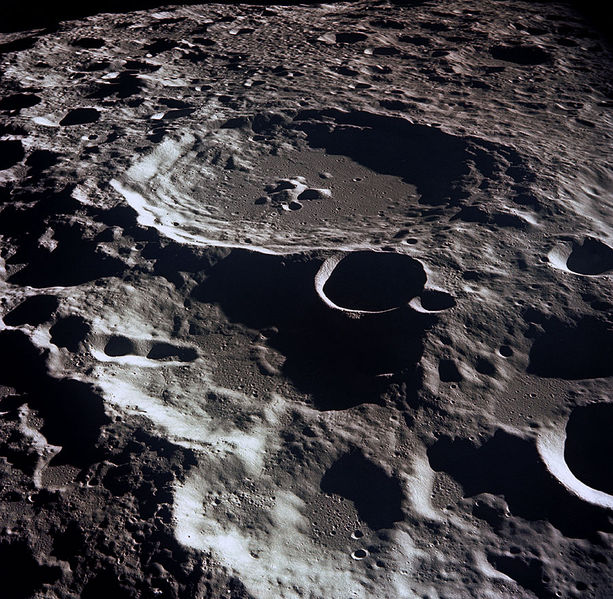Daedalus Crater has been suggested for this purpose.

Located at 5.9°S 179.4°E
https://en.wikipedia.org/wiki/Daedalus_(crater)
Why is it a good choice?
Location
It is near the middle of the far side, furthest from Earth's radio emissions with the bulk of the Moon between it and any terrestrial radio sources. This is the primary benefit of placing a radio telescope on the Moon, the bulk of the Moon's mass would block the majority of Earth's radio output. Placing it just over the horizon or at one of the lunar poles would not block all of the radio waves. The distance the radiation penetrates is based on the Attenuation length and the wavelength of the radiation. This location maximizes the mass of the moon between Earth, offering the most shielding possible.
As an example low frequency AM Radio has a wave length in the 10 kilometer range, so if you want to block 99% of the radiation (for a telescope you would want to block much more) you would need about 5× the wavelength of material or >50 km of material. There are also longer wave frequencies in use on Earth, so more distance of material is better.
Size and Shape
In terms of size it is one of the larger craters on the moon.
It is ~93 km in diameter with some central mountains for focal point instrumentation. for comparison Arecibo is only 305 meters, so Daedalus would be about 300× larger. It is also fairly circular and symmetrical (useful for shaping into a spherical reflector) for craters much larger than this the craters stop having the bowl shape needed for a reflector due to the curvature of the surface. Bigger is usually better for a telescope as it allows it to capture and focus from a larger area giving it better resolution. Another feature it has is a central mountain allowing the receiving instruments to be placed without the need for large support towers and very long wire supports or other large support structures, this helps a lot in terms of lowering the construction difficulty.
Shaping it into a better reflector shape would definitely be a major project, somewhat comparable to large open pit mining done on Earth. The largest man made excavation on Earth is only 4 km wide and 1 km deep and has been in production for more than 100 years, so this would be bigger but should only require minimal material removal given the existing crater shape (It's hard to say minimal with a straight face for an amount most likely measured in km³).
Estimates
Likely unifying the central mountain system and siting the instruments would be done first, with sculpting the crater walls into a better reflector shape continuing to improve the telescopes resolution as the project progresses. For improved performance they would also likely want to line the crater with an improved reflector material (Arecibo started with a wire mesh and later upgraded to Aluminum panels).
Making any accurate time estimate for a project this big is going to be impossible without knowing the capabilities of the Lunar construction apparatus, but it could easily be a decades long project just to construct the first instruments with refinements continuing for the foreseeable future, with each upgrade improving the range and resolution of the telescope.

